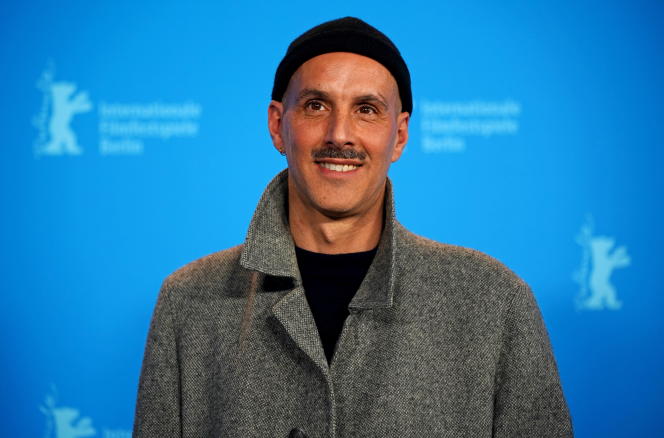Long silhouette, fine mustache and cap on the head, Patric Chiha looks like a contemporary dancer. And the warm smile of someone who likes to bring bands together. His films are often studies of groups, diverted from reality by a jet of artifice captivating the viewer in different narrative webs.
Born in Vienna in 1975, Patric Chiha trained in fashion design at the Ecole Duperré in Paris, before branching out into cinema at Insas (National Higher Institute for Performing Arts and Broadcasting Techniques) in Brussels. . The fashion world already seemed to him too far from the streets in the 1990s, but he still had a taste for movement.
His fifth feature film, The Beast in the Jungleadapted from the short story of the same title by Henry James (published in 1903), is an incredibly daring attempt to capture a lifetime of waiting in a nightclub, where the eras and the gestures of dancers parade, from 1979 to 2004. It is the story of John (Tom Mercier) and May ( Anaïs Demoustier), who hope that a “thing” will happen.
How did the idea of adapting the text by Henry James in a nightclub come about?
This news had a very strong place in my head, maybe it is because of the subject, where it is about a fantasy life and a non-productive time.
The nightclub is a real place in which we experience in a very concrete way the questions raised by The Beast in the Jungle : we exist there beyond life, without goal or stake. Because you shouldn’t expect anything from a party, otherwise you are generally disappointed.
With my co-screenwriters, Axelle Ropert and Jihane Chouaib, we worked a lot on the suspense to take the viewer into active expectation. John and May have a belief in an absolute ideal. They are in a bubble, it is both magnificent and tragic.
How do we stage the “nothing”?
The documentary taught me that: to direct is to find methods of filming. I wanted a nightclub with a balcony, from which the characters can observe and stand back, starting with John. Tom Mercier works on immobility, a way of never being in sync with others, of setting up distance. He reminds me of quite a few friends who have their own rhythm in society.
We shot in a Brussels club, Le Mirano, which incidentally is a former cinema, a detail that I liked. At a party, I love to sit and watch people move. It’s not about seeing if this or that dances well, it’s more in the faces that it happens. That’s what I tried to show: what story can we project in each face? Take John and May: even if they are not together, in the end, we see a love movie. People have asked me if my film is queer: in any case, the two characters invent their form of couple.
You have 44.43% of this article left to read. The following is for subscribers only.
